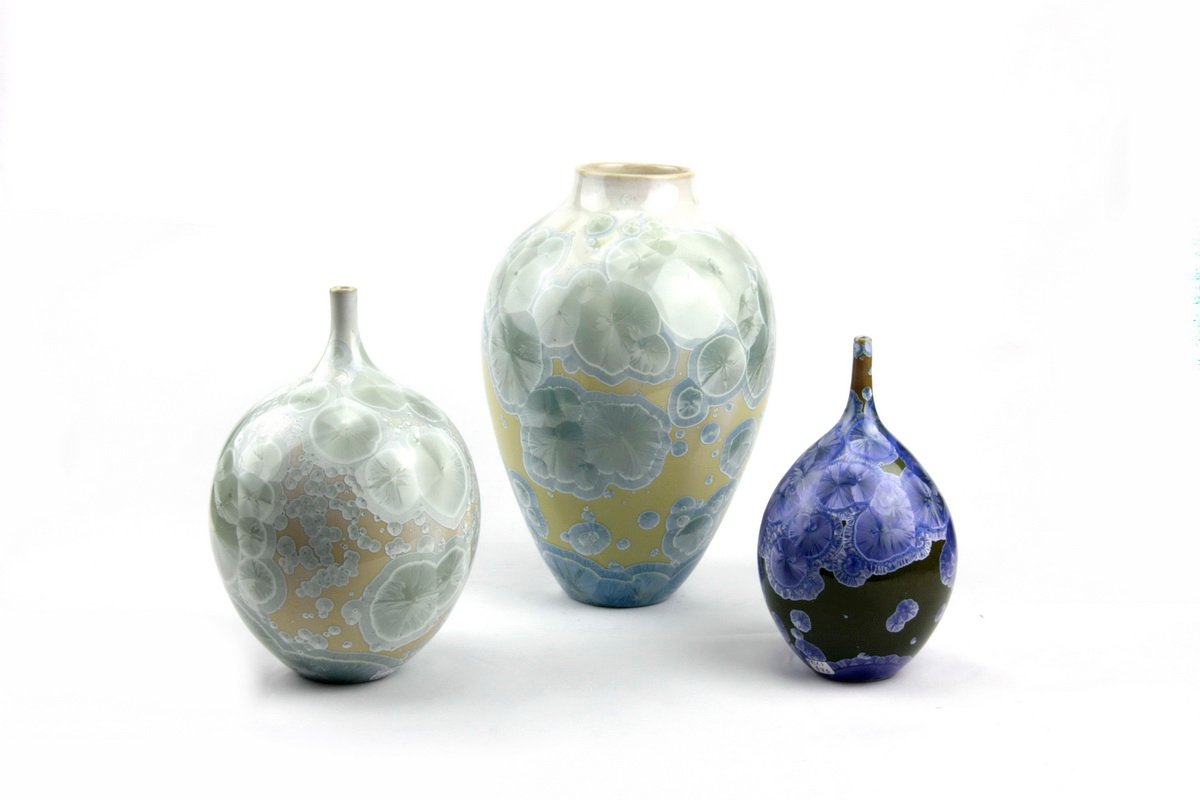ceramics
Showing 253–264 of 289 results
-
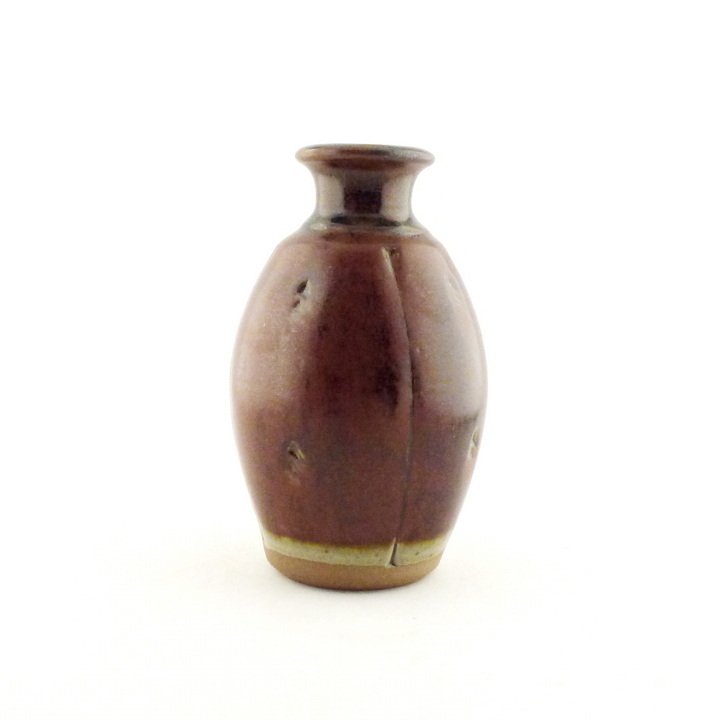
-

-

-
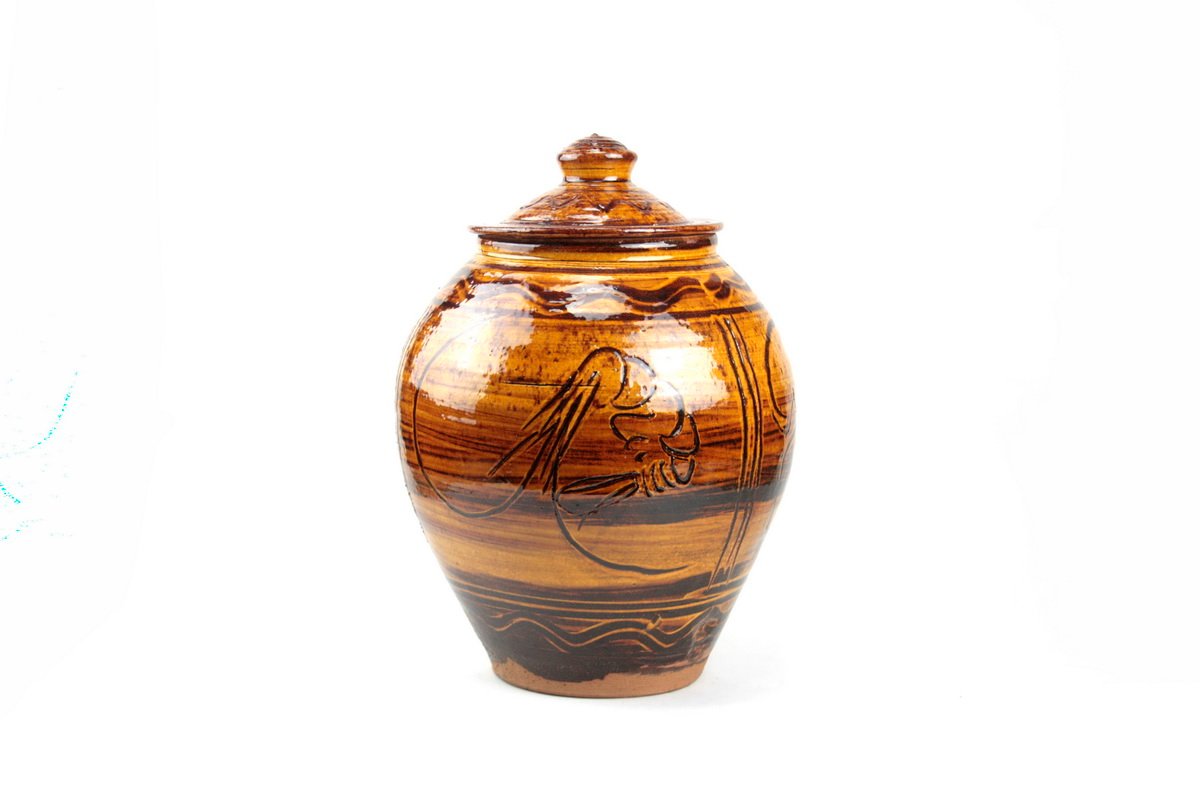
Bowen Clive
Born Cardiff, 1943
Works in Beaworthy, Devon
Clive Bowen was apprenticed to Michael Leach at Yelland from 1965-1970 and has been working from his studio in Beaworthy, Devon since 1971.
Clive’s large earthenware garden pots and planters are all hand-thrown and decorated. They are then fired at 1060oC in a wood-burning kiln. During the firing the flames and smoke travel between the pots and the resulting fluctuations in temperature and atmosphere give a tremendous richness to the finished product. The traditional making techniques produce slight variations in size, form and colour, giving each pot its own individual character, whilst blending well with all its neighbours in the kiln.
The earthy yet sophisticated qualities of the pots fit well in any style of garden. Planted up, the richness of brown glazes and the simplicity of terracotta enhance a wide range of foliage types. Empty, they have a sculptural calm often associated with Eastern gardens.
Clive Bowen’s pots have been widely exhibited, both in the UK and abroad. His work has also been bought for several major public collections, including those of the Victoria & Albert Museum, the National Museum of Wales, the Ulster Museum, and the Crafts Council Collection.
-

Fanshawe Kato Jill
Works in Devon and London
Encouraged by family members, Jill Fanshawe Kato started drawing at an early age. Her interest in the natural world was awakened at the age of ten, when her family moved from Nottingham to the small Devonshire village of Kingskerswell, near Torquay. She cared for numerous injured or orphaned wild birds and animals and had a tame jackdaw which stayed for three years before returning to the wild. Thus started her lifelong love of nature, which can be seen today in her ceramics. Travel to Spain, Asian countries, Brazil, to mountains and tropical islands such as the Maldives and Okinawa have all acted as sources of inspiration for Jill’s ceramics. She graduated in Painting from Chelsea School of Art; London then gained an Art Teacher’s Certificate. After a period of teaching she had the opportunity to visit Tokyo in Japan.
Even in the cheapest restaurants a long fish would be served on a long rectangular blue and white dish, with a variety of small dishes to complement the food. Sushi in shades of crimson, orange, yellow and silver appeared on a simple wooden board, beside it a yunomi cup of tea with fishing net painted on it. Expensive restaurants would use or display pottery by famous ceramic artists and handmade ceramics were a part of everyday life. As a result of these experiences, Jill joined the school of potter Yosei Itaka and began to study Japanese pottery. This study was enhanced by visits to many of the traditional pottery towns and villages, some in production for over 1000 years. She tried Karatsu clay at Musoan Pottery School, near Tokyo, and experimented in the disused studio of a friend, with many kinds of clay and glazes fired in a gas kiln. Returning to London in 1977, Jill established her first studio with a grant from the Crafts council. Since then, she has lived and worked in north London with her husband, Japanese photo-journalist Setsuo Kato. She continues to exhibit in Japan, with 43 exhibitions there, mainly at Keio Department Store in Tokyo but also in Okinawa. She has exhibited widely internationally and across the UK. Jill was a lecturer on the Postgraduate Ceramics Diploma course at Goldsmiths College, London, for 17 years and tutor at Lambeth Institute and Kingsway College. She lectures widely on ceramics, demonstrates and teaches. She has worked at the studio of potter Ryoji Koie in Japan and was recently invited to two ceramic residencies in Spain.
Interests include keeping an allotment with her husband, countryside walking, bird watching, horse riding, going to exhibitions, sketching, and travel. Jill is currently establishing a studio in Devon.
Brief description of work
Jill’s ceramics are inspired by the natural world and by travel. Making processes include coiling, slabbing, sculpting, using moulds, throwing and altering. Slips and glazes are applied for colour, which she constantly experiments with. She uses a range of stoneware clays and is currently experimenting with additions of River Dart clay, fired to 1270 degrees c. in a Laser gas kiln. Some raku pottery is also made.
Work ranges from functional pottery for Western and Japanese use to large sculptural commissions and wall murals.Source: http://www.jillfanshawekato.com
-
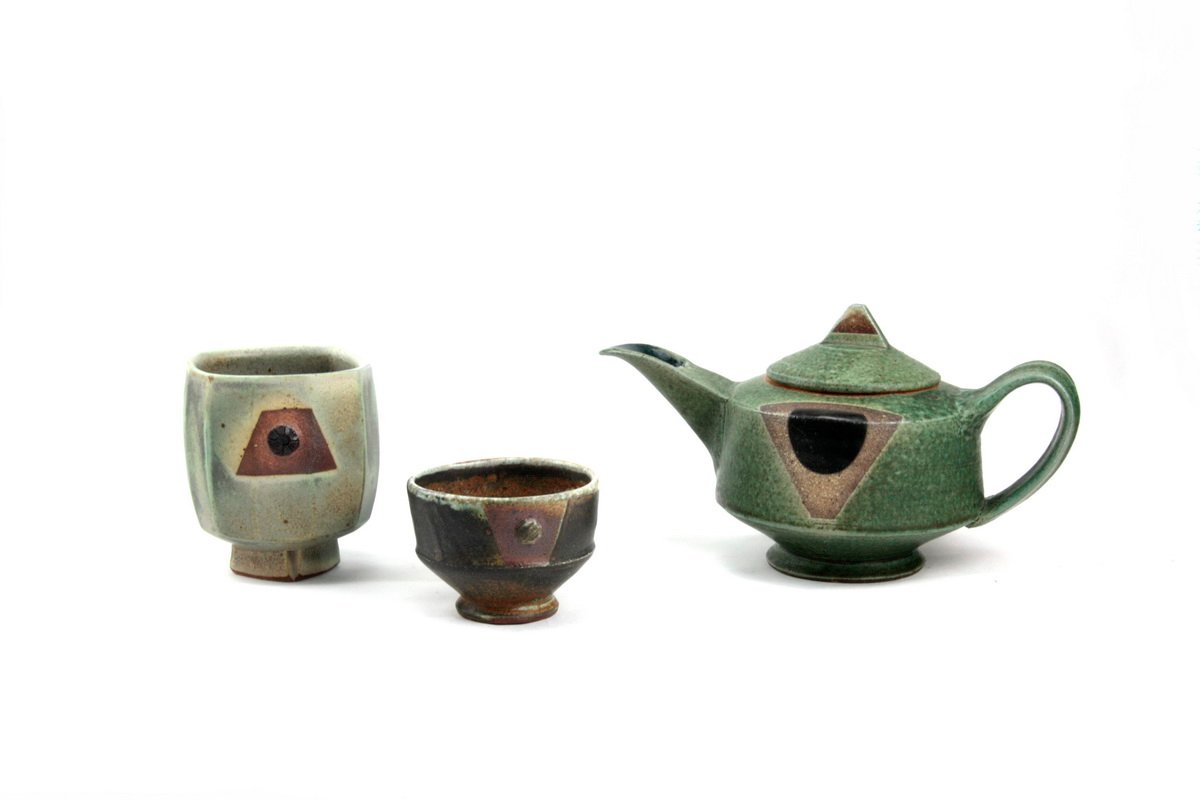
Oestreich Jeff
Born: December 7th, 1947 – St Paul, Minnesota.
1965 – 1969 Bemidji State University – BA Studio Art
1967 – 1968 University of Minnesota, Minneapolis
1969 – 1971 Apprenticeship, The Leach Pottery, St Ives
On his return to the States in 1971 after leaving the Leach Pottery Jeff set up his own workshop, making porcelain and stoneware. His work is thrown and altered. He variously uses electric, gas and wood fired kilns, and also has a salt kiln. His decoration is sometimes banded, sometimes wax-
resist, sometimes brushed – always in keeping with the form of the pot and with coloured areas in carefully planned proportions. Driven to achieve a personal style, he overlaid this foundation with a passion for Art Deco design and a ceaseless exploration of glaze and decoration techniques. His signature “beaked pitcher” is the refinement of a personal challenge to combine form and function elegantly.
A highly regarded studio potter, Jeff has exhibited widely in museums and galleries world-
wide, his work can be found in the outstanding collections of the Victoria and Albert Museum, the Inchon World Ceramic Center, the Smithsonian’s Renwick Gallery, the Los Angeles County Museum of Art among others. He opens his studio to the public every year. -
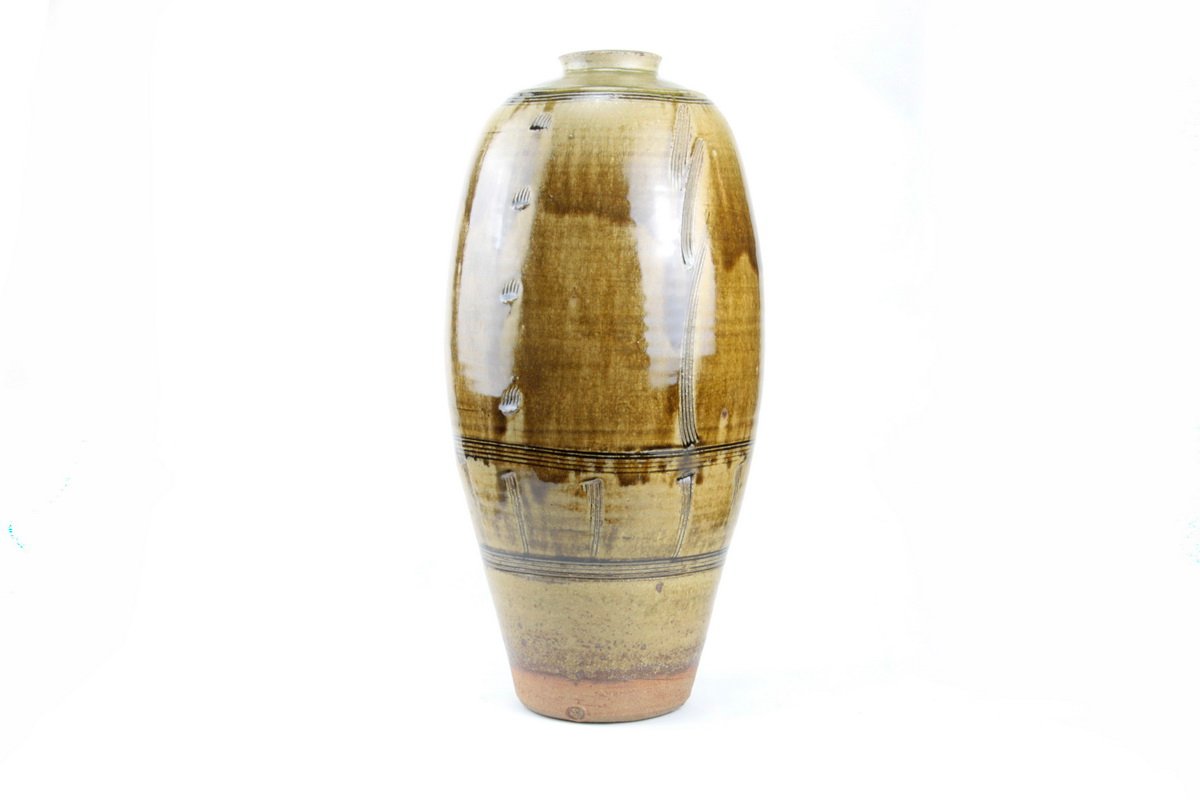
Rogers Phil
Phil Roger’s pots are hand-
thrown on the potters wheel, about half salt- glazed and half reduction- fired stoneware and are intended for use in the home. Technical Information
The pots are glazed at 1300 C, both kilns oil-
fired to Cone 11- 12. The most recent 70 cubic feet kiln is used mainly for salt- glazing and was built in 1998. The glazes make use of local materials, particularly woodash, but also using many local stone dusts and clays. The salt glaze takes advantage of a technique discovered in the 16th Century, using common salt, which produces a hard and durable glaze with a rich and sensuous surface. -

Laverick Tony
ARTIST STATEMENT
I have been a professional ceramic artist for more than 25 years. I set up my studio in the Staffordshire Moorlands in 1988 after I had studied ceramics and worked in the ceramic industry in Stoke on Trent. Part of that time I was a designer for Coalport China (then part of the Wedgwood Group).
This background gives me a broad appreciation of ceramics and techniques. I am interested in the art-ware produced by Royal Doulton in the late 19th and early 20th centuries and French potters such as Clement Massier. I also have influences from outside the ceramic world. Kandinsky, Malevich, Mondrian, Nicholson, Brancusi, Rodchenko and the designs of Frank Lloyd Wright are just some.
My work draws on these various sources and cultures, and I am always evolving my own original vision. which is a juxtaposition of controlled, linear designs with areas of loose, painterly decoration. I use the surface of the pot as a painter uses a canvas. Controlled, linear designs are juxtaposed with looser, more painterly areas. But I find that to use the medium of ceramics makes the “paintings” I create much more accessible.
To stand in front of a painting and admire it is one thing. But, I feel that to be able to hold a piece of art in your hands, feel the surface and the weight of it adds another dimension to the experience. It provides a connection with the artist whose hands will have created and also held that pieceThere is a combination of human judgement and technique that I still find exciting and rewarding. I have always been willing to take risks with my work and it is this quality that, in my opinion, distinguishes the artist from the craftsman.
In 2014, I was made a Fellow Member of the Craft Potter’s Association and in 2015, I was selected to be a member of Contemporary Applied Arts.
-
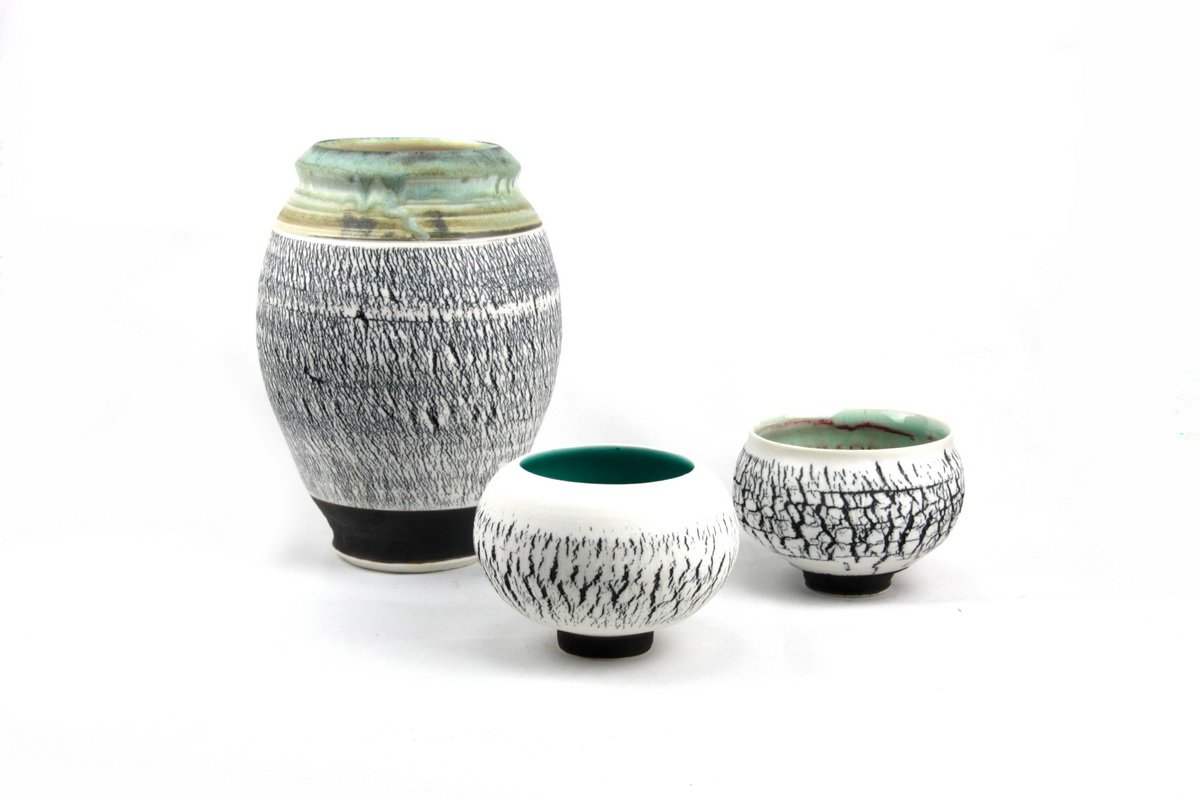
West Hugh
I was born in York in 1950 and lived in Yorkshire until I was 6 years old. I moved to Wales when my father took over the management of a large farm estate in Breconshire. At seventeen I left to study at Hereford School of Art & Design, transferring to Redruth School of Art to take a further ceramics course for which I was awarded a diploma with distinction. After work experience with several established potters, I opened my own pottery in Newquay in 1971.
An opportunity arose in 1975 to begin a large production pottery in Devon on the Flete estate. After this in 1982, I took my family to La Borne in the department of Cher, France, where an ancient pottery village still survives, repeating the traditional forms and ways of wood firing important to that region of central France, using an anagama kiln.
In 2000 I went again to live and work in La Borne.
Exhibitions and Memberships: These include numerous one-
man shows in Britain; collective shows in Europe, Japan, the USA, Saudi Arabia, South Korea and, in 1996, a 25th anniversary in Truro. I was a member of the Cornwall Crafts Associations, the West Country Potters Association and the Penwith Society of Arts. I am now a member of the Association of Potters of La Borne. We returned to Cornwall in January 2014 and I have renewed my membership of the Cornwall Crafts Association.
-

Leach Jeremy
Born: 1941, Pottery Cottage, St. Ives
The younger son of David Leach and grandson of Bernard Leach, he spent his early childhood years in St. Ives at the Leach Pottery and later moved with his family to Bovey Tracey in Devon, where his father established Lowerdown Pottery.
Naturally, his initial pottery training took place there, followed by formal training, including study at the Central School of Art and Craft in London in 1961. During a cultural visit to the Lebanon, where he potted and had a subsequent solo exhibition in 1965, he learnt that “ pots must be seen and felt and not described in words”. At around this time he also became interested in Chinese calligraphy, traced of which are evident in some of his work today.
Over the years Jeremy has taught pottery at Moreley College and Southlands College of Education, and at Harrow and Merchant Taylor Public Schools.
He has made a study of the use of eucalyptus ash for Chun glazes, published an article on “The Analysis of Throwing” in Ceramic Review, and has produced a video available in CD-
format on making pots. Jeremy’s work has been exhibited across the UK and abroad and is currently available in a number of galleries in Devon. Some of his work is on display in the British Museum in the European section of Pottery and Ceramics.
-
Drakeford Bridget
Bridget Drakeford’s ceramics range from wide, open bowls to teapots and caddies, with some pieces having innovative decorative detailing in precious metals, hand worked by the artist. All of her pots are graced with a subtlety of finish and sophistication of glaze colour that makes them collectable and sought after.
“After three years taking part-time classes my potting career began in the South West of Scotland in 1976. Learning to make production stoneware for the Scottish market gave me a love of throwing, which is still the aspect of making that I enjoy most. I moved back to England in 1982 where I worked at the Jinney Ring Craft Centre for the next 12 years. Then, in 1994, I was able to set up home and studio in Herefordshire.
“Early in my potting career I explored a variety of styles, but after discovering the beauty of working in porcelain I concentrated exclusively on this material. I have always been drawn to the pots of Geoffrey Whiting and Lucie Rie; a Geoffrey Whiting teapot shows balance, simplicity and function to perfection. These are properties I value and try to achieve in my own work.
“Inspiration has come from the classical forms of both European and Oriental traditions. I draw on their basic simplicity of form and try to reflect this in my own shapes. Usually, I work on a series of pots – teapots, jugs or vases – often developing different finished shapes from the same body form. I turn as little as possible, but I like to obtain thinness and translucency particularly in my bowls. I use both reduction (gas) and oxidised (electric) firings, always on the hunt for the ‘perfect’ glaze. Gold lustre is sometimes used to finish pieces.”
Bridget’s work is shown in galleries in Europe, the Middle East and Japan and at major venues throughout the UK. She is a professional member of the Craft Potters Association of Great Britain.
-
Rich Simon
Simon trained with Alan Caiger-
Smith at the Aldermaston Pottery in the early sixties. His present workshop was established in Narbeth, Pembrokeshire in 1972. He has been featured on BBC Radio Four and on TV. Simon exhibits in Japan and many other major cities in the UK. For the last 25 years Simon has been working on and perfecting zinc crystalline glazes. The glazes are applied to porcelain and then fired to 1270 c. The kiln temperature is then dropped to 1140 C and held for up to five hours to allow the zinc oxide to form crystals.
Simon also explores other techniques including terra sigillata and raku pieces along with glazed ware ranging in colour from azurite to deep rich reds.

